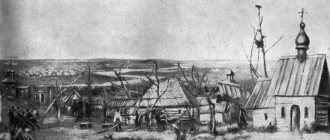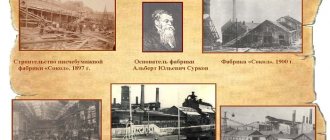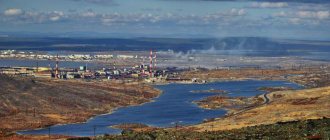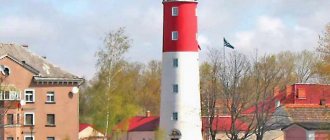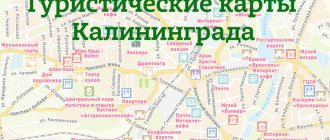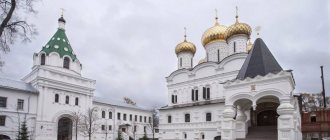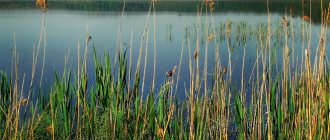Nikolsk
, a city in Russia, the administrative center of the Nikolsky district of the Vologda region, within the Veliky Ustyug diocese. Located on the slopes of Northern Uvaly, the pier is on the right bank of the Yug River (a tributary of the Sukhona), 160 km south of the Veliky Ustyug railway station, 442 km east of Vologda. Population - 8.4 thousand (2012).
- On the map: Yandex.Map, Google map
Nikolsky Pogost
(
Nikolskaya Sloboda
) was founded in the century by immigrants from the central regions of Russia as a pier on the Yug River. It owes its name to the Church of St. Nicholas the Wonderworker, which, according to legend, replaced the chapel built on the site of the discovery of the icon of St. Nicholas the Wonderworker.
At the end of the 16th century, with the beginning of foreign trade through the Arkhangelsk port, from 35 to 50 barges were built here annually, the material for which was delivered from the surrounding pine forests.
After the census of 1623-1626, the name of the settlement was reflected in the name of the volost.
In 1780, by decree of Empress Catherine II, Nikolskaya Sloboda received the status of a district town of Nikolsk
Vologda governorship. The quarterly development of the city was first provided for by the general plan of January 16, 1784, with the streets converging on the central square near the church. Since 1796 it has been a district town in the Vologda province. In the 1820s, the authorities decided to evict the neighboring villages of Borisovo, Melentyevo and Vakhromeevo to the city, and declare their lands as city property. However, the transformation did not turn villagers into townspeople - local residents retained their customs, which differed significantly from the bourgeois culture.
In the 19th and early centuries, Nikolsk and its district were a place of political exile.
By 1894, one distillery and two brick factories were operating in the city; religious school, women's gymnasium, city and parochial schools; almshouse, hospital. The main occupations of the residents were flax growing, hunting and building river boats. Nikolsk was still famous for its trade: grain, grain, timber, flax, resin, tar, and some other peasant goods were exported in significant quantities. By the 1910s, the development of the historical part of the city acquired the appearance that was generally preserved at the beginning of the 21st century.
In 1918-1929, Nikolsky Uyezd was part of the Northern Dvina Governorate, then - part of the Northern Territory and Northern Region. Since 1937, the city has been the regional center of the Vologda region. By the end of the Soviet period, a butter factory and a flax mill operated in the city [1].
Statistics
- 1623 – 83 peasant households, 47 ladles’ households [2]
- 1856 - 1.2 thousand. people, 2 churches, 145 houses, 18 shops [3]
- 1894 - 3 stone churches, 375 houses (of which 4 were stone) [2]
- January 1, 1896 - 2061 people [2]
- 1913 - 3 thousand people [3]
- 1931 - 3.2 thousand people [3]
- 1959 - 5.6 thousand people [3]
- 1970 - 6.5 thousand people [3]
- 1989 - 8.6 thousand people [3]
- 2001 - 9.2 thousand people [3]
Nikolsk
(Vologda Region)
OKATO code:
19234501
Founded:
15th century.
City since:
1780 City of district subordination (Nikolsky district, Vologda region)
Center:
Nikolsky district
Telephone code (reference phone)
| 81754***** | 22-2-22 |
Deviation from Moscow time, hours:
0
Geographic latitude:
59°32′
Geographic longitude:
45°27′
Altitude above sea level, meters:
140 Sunrise and sunset times of the Sun and Moon in the city of Nikolsk
Economics [edit]
Industry[edit]
The forestry and food industries are represented in Nikolsk, including the production of meat, milk and bread. There is also a textile production line called Linum.
Transport[edit]
The city was formerly served by Nikolsk Airport, which is currently closed.
Paved roads connect Nikolsk with Pishchug and Manturovo in the south, crossing the border with Kostroma Oblast, with Totma in the west and with Veliky Ustyug via Kichmensky Gorodok in the north. There are regular bus services along these roads as well as local bus services.
The Yug River is navigable downstream from Nikolsk; however, there is no passenger navigation.
There are no railways around Nikolsk, and the nearest railway stations with regular passenger service are Kotlas in the Arkhangelsk region and Sharya in the Kostroma region. It was planned to extend the Montskaya railway, built for timber carriers, which runs along the border of the Vologda and Kostroma regions, to Nikolsk; However, these plans were not destined to come true. [12]
Map
| Nikolsk: maps |
Nikolsk: photo from space (Google Maps) Nikolsk: photo from space (Microsoft Virtual Earth)
| Nikolsk. Nearest cities. Distances in km. on the map (in brackets along roads) + direction. Using the hyperlink in the distance , you can get the route (information courtesy of the AutoTransInfo website) | |||
| 1 | Kichmengsky Town | 54 (63) | WITH |
| 2 | Pavino (Kostroma region) | 60 (116) | SE |
| 3 | Pyshchug (Kostroma region) | 73 (73) | YU |
| 4 | Georgievskoe (Kostroma region) | 92 (241) | YU |
| 5 | Vokhma (Kostroma region) | 99 (163) | SE |
| 6 | Kologriv | 100 (199) | SW |
| 7 | Bogovarovo (Kostroma region) | 108 (173) | SE |
| 8 | Nyuksenitsa | 118 (315) | NW |
| 9 | Podosinovets (Kirov region) | 122 (143) | NE |
| 10 | Vetluzhsky (Kostroma region) | 127 (142) | YU |
| 11 | Demyanovo (Kirov region) | 128 (158) | NE |
| 12 | Sharya | 129 (140) | YU |
| 13 | them. Babushkina | 132 (179) | Z |
| 14 | Manturovo | 139 (181) | YU |
| 15 | Ponazirevo (Kostroma region) | 139 (188) | YU |
a brief description of
Located on the slopes of Northern Uvaly, pier on the river. South (tributary of the Sukhona), 160 km from the railway. Veliky Ustyug station, 442 km east of Vologda.
In the Nikolsky district there are nature reserves: Talitsky Forest (landscape) and Gladky Bor.
Territory (sq. km): 17
Information about the city of Nikolsk on the Russian Wikipedia site
Historical sketch
According to the scribe books of 1623, at the end of the 14th - beginning of the 15th centuries. existed as a pier called Nikolsky Pogost (Nikolskaya Sloboda); name after the church. In 1623 there were 83 peasant households.
In the 18th century this is the village of Nikolskoye, which in 1780 was transformed into the district town of Nikolsk of the Vologda governorate (since 1796 - Vologda province).
The main occupations of residents in the 19th - early 20th centuries. - flax growing, hunting and construction of river barges.
In 1856, in the district town of Nikolsk, Vologda province, there were 2 churches, 145 houses, 18 shops.
In the 19th century Nikolsk is a place of political exile, among those exiled is the publicist N.V. Shelgunov (1824-91), traveler and ethnographer G.N. Potanin (1835-1920) and others.
Economy
Lespromkhoz, flax plant, food processing plant (confectionery), JSC Nikolskmoloko.
In the Nikolsky region, mainly oats, flax, potatoes, and forage grasses are grown. Dairy and meat and dairy cattle breeding. Horses and pigs are also bred.
Deposits of limestone, sand, clay, peat.
Culture, science, education
Nikolsk is the birthplace of the poet A.Ya. Yashina.
Museums, galleries, exhibition halls
Nikolsky Historical and Memorial Museum of A.Ya. Yashin 161440, Vologda region, Nikolsky district, Nikolsk, st. Bankovskaya, 14
Architecture, sights
Sretensky Cathedral (late 18th - early 19th centuries), Kazan Church (late 19th century), buildings of the former religious school (1822) and zemstvo administration (mid-19th century).
On the outskirts of the city there is a natural monument - Yashkin Bor.
| Population by year (thousands of inhabitants) | |||||||
| 1856 | 1.2 | 1989 | 8.6 | 2006 | 8.6 | 2015 | 8.0 |
| 1897 | 2.6 | 1992 | 8.9 | 2007 | 8.5 | 2016 | 8.0 |
| 1913 | 3.0 | 1996 | 9.2 | 2008 | 8.5 | 2017 | 8.0 |
| 1931 | 3.2 | 1998 | 9.2 | 2010 | 8.4 | 2018 | 8.0 |
| 1939 | 5.1 | 2000 | 9.2 | 2011 | 8.5 | 2019 | 8.0 |
| 1959 | 5.6 | 2001 | 9.2 | 2012 | 8.4 | 2020 | 7.9 |
| 1970 | 6.5 | 2003 | 8.6 | 2013 | 8.2 | 2021 | 8.0 |
| 1979 | 7.3 | 2005 | 8.6 | 2014 | 8.1 | ||
Climate
| Climate of Nikolsk | |||||||||||||
| Index | Jan | Feb | Mar | Apr | May | Jun | Jul | Aug | Sep | Oct | But I | Dec | Year |
| Average temperature, °C | 12,3 | 10,6 | 4,3 | 3,5 | 10 | 15,5 | 17,8 | 14,4 | 9 | 2,5 | 5,4 | 9,6 | 2,6 |
Communication
Dating in nearby cities:
Cherepovets Vologda Sheksna Babaevo Ermolino Belozersk Veliky Ustyug Gryazovets Vytegra Kirillov Kadnikov Krasavino Sokol Ustyuzhna Totma Sazonovo Log Vozhega Verkhovazhye Babushkino Kichmengsky Town Kaduy Vokhtoga Nyuksenitsa Dairy Lipin Bor Tarnogsky Town Syamzha Sudakovo Suda Fedotovo Ustye Tonshalovo Chagoda Kharov SK Rogovskaya Southern Bugry Kamenka Krasny Bor Krasny Dvor Krasny Kholm Belovo Guba Roslyakovo Safonovo Berezniki Berezovka Komsomolsky Lobanovo Mount Fokino Mikhailovka Slavyanka Roshchino Seredka Varlamovo Elkhovka Koshkino Mirny Sergievskaya Georgievskaya Demino Dmitrievskoye New Northern Farm Maryinskaya Orlovka Pervomaisky Podgornaya Yasnaya Polyana Ageevo Dubovka October Dawn Shchekino Bukhara Bukhara Le Havre Ilkovo Steam Nelidovo Gomanikha Nakhodka Mulino
Share
Previous city Dating Kadnikov (Vologda region) Next city Dating Krasavino (Vologda region)
#overheard # let's meet
#
nearby
#
announcements
#
Chat
#
Sign up
# positive
#
looking for you
#
girl
18-20 years old #
find
#
guy
#
flirting
#
woman
over 35-40 years old #
man
over 45-50 #
want
#
to meet
#
family
#
real
#
typical
#
VK
# Confessions
#
News
#
Weather
#
Forum
# love
Better than: # Mamba
#
Tabor
#
Shura Mura
#
Loveplanet
History[edit]
Belozersk (Vologda region): attractions
The area was originally inhabited by Finno-Ugric peoples. [ citation needed
] In the 14th and 15th centuries, during colonization, it was a disputed territory between the Grand Duchy of Moscow and the Novgorod Republic.
[ citation needed
] Novgorod controlled most of the Russian North, and in particular all areas along the Sukhona River northeast of the present Nikolsky District.
[ citation needed
] Moscow controlled Veliky Ustyug, which it inherited from the Principality of Vladimir-Suzdal, and the Yuge River was the waterway along which it went to Veliky Ustyug.
[ citation needed
] It is known that in 1425 Nikolsk and its environs paid tribute to Novgorod.
At the end of the 15th century, the Grand Duchy of Moscow captured the territories of Novgorod, and Nikolsk became one of the key points on the route from Moscow to the White Sea, which until 1703 was the main route of foreign trade. in Russia. [ citation needed
] Nikolsky port, in particular, was used for the transport of goods.
[ citation needed
]
During the administrative reform carried out in 1708 by Peter the Great, the territory became part of the Arkhangelgorod Governorate. [ citation needed
] In 1780, the governorate was abolished and transformed into the Vologda viceroyalty.
[ citation needed
] At the same time, Nikolsk became a district seat and received city rights.
The governorship was abolished in 1796, and Nikolsky Uyezd was transferred to the Vologda Governorate. [ citation needed
] On July 24, 1918, the territory was transferred to the newly formed Northern Dvina province with its administrative center in Veliky Ustyug. On April 18, 1924, the counties were abolished in favor of new divisions, okrugs, as a result of which the Nikolsky district was formed.
References
Vvedensky Cathedral (1780-1833) in Nikolsk after the fire of 2005
Sources
- Legislative Assembly of the Vologda Region. Law No. 371-OZ of June 4, 1999 “On the decision of the administrative-territorial Vologda region,” as amended. Law No. 2916-OZ of December 7, 2012 “On Amendments to the Law of the Region” On Issues of the Administrative-Territorial Structure of the Vologda Region “”. Came into force on the date of official publication. Published: “Red North”, No. 124–125, July 29, 1999 (Legislative Assembly of the Vologda Region. Law No. 371-OZ of June 4, 1999 “ On issues of the administrative-territorial structure of the Vologda Region”
as amended by the Law of December 7, 2012 No. 2916-OZ “
On Amendments to the Law of the Region” On Issues of the Administrative-Territorial Structure of the Vologda Region"
. Valid from the date of official publication.). - Government of the Vologda region. Resolution No. 178 of March 1, 2010 “On approval of the register of administrative-territorial units of the Vologda region,” as amended. Resolution No. 686 of June 25, 2012 “On amendments to some Resolutions of the Regional Government.” Entered into force on March 20, 2010. Published: “Red North”, No. 29, March 20, 2010 (Government of the Vologda Region. Resolution No. 178 of March 1, 2010 “ On approval of the Register of administrative-territorial units of the Vologda Region”
as amended Resolution No. 686 of June 25, 2012 "
On amendments to various resolutions of the Regional Government
. Enters into force as of March 20, 2010). - Legislative Assembly of the Vologda Region. Law No. 1119-OZ of December 6, 2004 “On establishing the boundaries of the Nikolsky municipal district, the boundaries and status of the municipalities included in its composition,” as amended. Law No. 3020-OZ of April 1, 2013 “On the transformation of some municipalities of the Nikolsky municipal district of the Vologda region and on amendments to the regional Law “On establishing the boundaries of the Nikolsky municipal district, the boundaries and status of the municipalities included in its composition””. Came into force 10 days from the date of official publication. Published: “Red North”, No. 242, December 11, 2004 (Legislative Assembly of the Vologda Region. Law No. 1119-OZ of December 6, 2004 “ On establishing the boundaries of the Nikolsky municipal district, on the boundaries and status of its constituent municipalities "
as amended by Law No. 3020-OZ of April 1, 2004, 2013
On the transformation of several municipalities of the Nikolsky municipal district of the Vologda region and on amendments to the Law of the Vologda region "On establishing the boundaries of the Nikolsky municipal district, on the boundaries and status of those included in its composition of municipalities "
. 10 days from the date of official publication.).
Religion
The city was founded in the century at the St. Nicholas Church, on the site of the discovery of the icon of St. Nicholas the Wonderworker, which gave it its name. When transformed into a city, when Nikolsk received the first urban plan, the church was determined to be the center of the street grid. In place of the burnt wooden church, the impressive Sretensky Cathedral was erected in 1788-1833. Since 1886, the Kazan Church was erected in the southern part of the city, which became the second dominant feature in the city’s silhouette. By 1894, there were already three stone churches in Nikolsk, a theological school and a parochial school were operating.
Since 1921, the Nikolsk diocese operated as a vicariate of Veliky Ustyug. However, during the period of atheistic persecution, churches were taken away from believers, the vicariate was stopped, and open church life was stopped for decades. But the church buildings were used and preserved.
In 1990, the Kazan Church was returned to believers, becoming the first revived temple for many tens of kilometers in the area. Now church life was being revived here under the omophorion of the Vologda ruler. Meanwhile, the Sretensky Cathedral was not returned to the Church, although it ceased to be used for other purposes, and after the fire of 2005 it was severely damaged and began to quickly deteriorate. In 2014, the city was reassigned to the revived Veliky Ustyug diocese.
Temples
- Kazan Icon of the Mother of God
- Nicholas the Wonderworker (burnt down, replaced by Sretensky Cathedral)
- St. Nicholas the Wonderworker, chapel
- Protection of the Blessed Virgin Mary (lost)
- Presentation of the Lord, cathedral (closed ca. 1929)
Story
The area was inhabited by Finnish peoples. In the 14th–15th centuries, during colonization, it was a disputed territory between the Grand Duchy of Moscow and the Novgorod Republic. Novgorod controlled most of the Russian North and, in particular, all areas along the Sukhona River northeast of the Nikolsky district. Moscow controlled Veliky Ustyug, which it inherited from the Principality of Vladimir-Suzdal, and the Yug River was the waterway it used to reach Veliky Ustyug. It is known that in 1452 Nikolsk and its environs paid tribute to Novgorod. At the end of the 15th century, Novgorod was captured by the Grand Duchy of Moscow, and Nikolsk became one of the key points on the route from Moscow to the White Sea, which until 1703 was the main route of Russian foreign trade. In particular, the port in Nikolsk was used for the transport of goods.
During the administrative reform carried out in 1708 by Peter the Great, the region became part of the Arkhangelgorod Governorate. In 1780, the province was abolished and transformed into the Vologda Governorate. At the same time, Nikolsk became a district seat and received city rights. In 1796, the governorship was abolished, and Nikolsky Uyezd was transferred to the Vologda Governorate. In 1918, the territory was transferred to the newly formed Northern Dvina province with its administrative center in Veliky Ustyug. In 1924, the counties were abolished in favor of new divisions - districts (districts).
On June 10, 1924, the Nikolsky district was formed. In 1929, the Northern Dvina Governorate was annexed to the Northern Territory. The region consisted of five districts, one of which, Northern Dvina, had an administrative center - Veliky Ustyug. Nikolsky district became part of the North Dvina district. In July 1930, the okrugs were abolished, and the okrugs were directly subordinated to the Northern Territory. In 1936, the Northern Territory was transformed into the Northern Region, and in 1937, the Northern Region was divided into Arkhangelsk and Vologda regions. Since then, Nikolsky district has remained in the Vologda region.
On June 10, 1924, Roslyatinsky district was created, with the administrative center in Roslyatino. On July 30, 1931, it was annexed to the Ledengsky district, then in 1935 it was recreated, and on November 12, 1960, the Roslyatinsky district was again abolished with the division of its territory between the Babushkinsky and Nikolsky districts.
Until the 1990s, Nikolsky district was one of the most remote areas of the Vologda region. Nikolsk was connected by roads with Veliky Ustyug and Vologda, but to travel from Nikolsk to Moscow it was necessary to take a detour to Vologda. The problem was solved when the road to Pishchug and Manturovo in the Kostroma region was built in the late 1990s.
Geography
The village of Argunovo in the north of the region.
The area's landscape is dominated by the chain of hills of the Northern Range, separating the basins of the Northern Dvina and Volga rivers or, more generally, the basins of the Arctic Ocean and the Caspian Sea. Rivers in the eastern part of the district flow into the South River, which forms a large loop within the district. The city of Nikolsk is located on the banks of the Yug River. South is one of two sources (along with Sukhona) of the Northern Dvina. The northern part of the district belongs to the basin of the Sharzhenga River, a left tributary of the South. The southwestern part of the region belongs to the basin of the Unzha River, a left tributary of the Volga, and on the Mezha River, the main (left) tributary of the Unzhensky. Minor areas in the south and very east of the region are located in the basin of the Vetluga River, another left tributary of the Volga, and its right tributary, the Vokhma. The sources of Unzha and Vokhma are located within the region.
Significant areas of the region are covered with coniferous forests.
Population
| Population | |||||
| 1856[3] | 1897[3] | 1913[3] | 1931[3] | 1939[3] | 1959[4] |
| 1200 | ↗2600 | ↗3000 | ↗3200 | ↗5100 | ↗5584 |
| 1970[5] | 1979[6] | 1989[7] | 1992[3] | 1996[3] | 1998[3] |
| ↗6451 | ↗7288 | ↗8574 | ↗8900 | ↗9200 | →9200 |
| 2000[3] | 2001[3] | 2002[8] | 2003[3] | 2005[3] | 2006[3] |
| →9200 | →9200 | ↘8649 | ↘8600 | →8600 | →8600 |
| 2007[3] | 2008[9] | 2009[10] | 2010[11] | 2011[3] | 2012[12] |
| ↘8500 | →8500 | ↘8425 | ↗8476 | ↗8500 | ↘8403 |
| 2013[13] | 2014[14] | 2015[15] | 2016[2] | ||
| ↘8223 | ↘8063 | ↘7989 | ↘7976 | ||
Culture and recreation[edit]
Nikolskoe cabaret
In Nikolsk there are sixty objects recognized as cultural and historical heritage of local significance. [13] These are the remains of Nikolsk before 1917.
Author Alexander Yashin, associated with the "Village Prose" movement in Russian literature, was born in 1913 in what is now Nikolsky District, educated in Nikolsk and lived in the city until the mid-1930s. The only state museum in Nikolsk is the Alexander Yashin Memorial Museum. [14] The museum occupies the house that belonged to Yashin's parents, as well as Yashin's former house.
